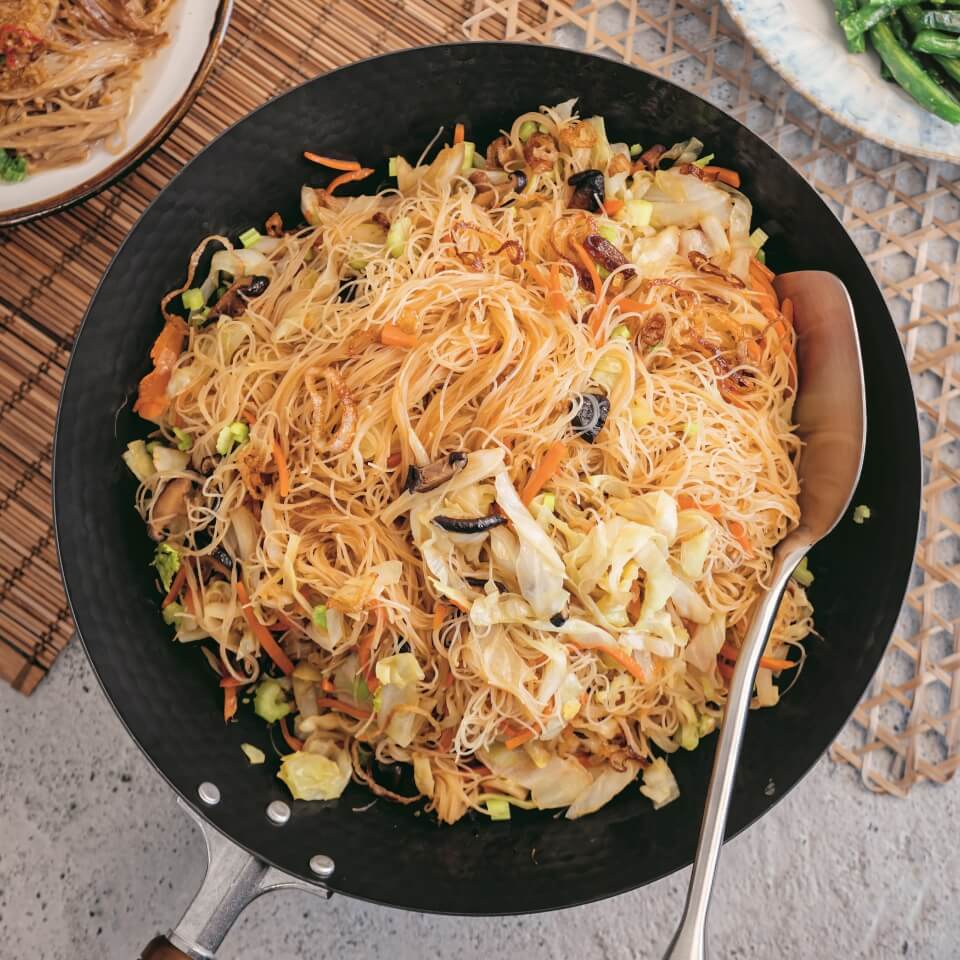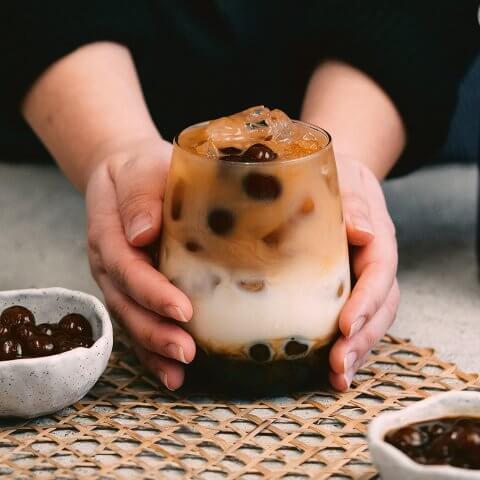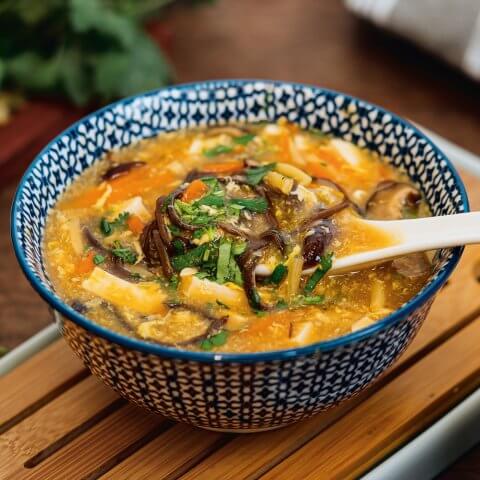For home cook and social-media personality Tiffy Chen, it’s impossible to talk about food without also talking about family. The 30-year-old grew up in Taiwan – where, she says, people commonly greet each other by saying “chia̍h pá bōe,” which roughly translates to “have you eaten yet?” – visiting some of the world’s best street-food vendors and night markets and watching her loved ones cook. On some days, her dad would take her out of school early so they could check out buzzy new restaurants, and after the family moved to British Columbia (minus her dad, who flew back and forth for years to work) when Chen was in middle school, her mom would remind them of home by making beloved family recipes. “Food is our love language,” says Chen, who is known online as @tiffycooks. “Without family and without our stories, the dishes [that I love] wouldn’t be as important to me.”
Like so many of us, Chen didn’t have written versions of family recipes; she could only learn by watching and asking questions as her mom and grandmothers tossed seemingly random dashes and spoonfuls of ingredients into sizzling pans and bubbling pots to create dynamic, fulsome meals. But when her paternal grandmother died, she realized that so many of those recipes were suddenly gone. That’s why, when her loyal TikTok following (her snappy, easy-to-follow tutorials have now brought her up to 3.3 million followers and counting) led to a book deal, Chen immediately knew she wanted to create an official record of her family’s comforting go-to dishes and the memories that go along with them.

In a way, Chen’s debut cookbook, aptly titled Tiffy Cooks, is a selfish act – it’s something she’ll forever turn to in her own life when she’s forgotten, say, the amount of shallot oil she should use in her grandma’s Taiwanese stir-fry noodles. She developed each of the 88 recipes with her family and even spent time in Taiwan with her maternal grandmother to perfect them. (Chen went back to Taiwan to present her grandparents with physical copies of the book, and she says her grandmother was stunned and speechless as her hands traced the photos.)
And while the book may double as a family heirloom, Chen is also excited for the opportunity to share authentic Asian recipes (which are infused with her own personality and influenced by her Canadian home) in a way that is approachable for anyone, regardless of their skill level or where they live. “I wanted the book to feel like a menu, so when you don’t know what to make or people are coming over, you can pick out a few appetizers, a few meat dishes and put it all together just like you would when you go to a restaurant,” she says. “When it comes to home cooking, I really believe it’s about having fun and being able to customize a dish to your liking.”
While her cookbook recipes are quite different from her popular TikTok recipes – online, Chen has earned fans for her under-60-second videos chronicling 20-minute dinners, “better than takeout” meals and street-food-inspired dishes that are all designed for busy people who want to cut back on kitchen time but not on (usually Asian) flavour – they come from the same passionate, loving place. Chen started cooking for herself when she was studying at Queen’s University in Kingston, Ont., as a way to relieve stress and homesickness in a city that didn’t have the most diverse food scene. Even while pursuing a more “practical” career (she studied computer science, then economics and then marketing when she moved back to B.C.), she would start and stop different food-blogging ventures, never really figuring out her niche. Then the pandemic hit, and she decided to upload food-related videos to about 80 people in her circle on a private Instagram as a way to stay in touch and keep busy doing something she liked. Chen figured that if she could post one video to the page for 100 days in a row, it might be something she could take public. She hit the mark easily and, armed with more confidence and a renewed sense of focus, started public accounts and posted her first video, which went viral overnight. Just a few months later, in January 2021, she quit her day job to become a full-time food creator, and the rest is history.

Now with a book, a packed schedule of online videos (as well as posting content to her website) and a new brand of Asian condiments and noodles called Kai Dong all under her belt, Chen knows it’s important that she cook not just for her family, readers and viewers but for herself too. “I enjoy the challenge of looking at what ingredients I have and figuring out what I can make out of them,” she says. “For me, cooking is like therapy because I’m not thinking about anything else and it helps me find clarity. Taking the time to create something just for yourself is a form of self-love.”
Tiffy Chen shares her 4 pantry essentials for Taiwanese cooking
1. Five-spice powder
“This is such an essential spice in Taiwanese pantries, and it’s found in so many popular dishes, like braised pork belly rice and cauliflower chicken. I love it because it has so much depth. It’s usually made with star anise, fennel seeds, clove and cinnamon stick, and then the fifth ingredient can vary depending on what your household prefers or what you have on hand – I usually use Sichuan peppercorn because of the nice numbing kick. When I smell it, I think of my childhood right away.”
2. Soy sauce
“This is a classic – I had a comment [on a video] that was like, ‘You always use soy sauce. Do all these dishes taste the same?’ and it’s like, ‘No.’ Soy sauce is one of the things I can’t live without, and I think it’s one of the best condiments to use to flavour things. You can use it as a dipping sauce or for stir-frying, seasoning or braising, and it can change the flavour of a dish so much. If there’s no soy sauce in our kitchen, we don’t know what to do.”
3. Tapioca starch
“Tapioca starch is the main ingredient in so many desserts and deep-fried dishes as well as boba pearls. (And I love bubble tea.) I use it when I make deep-fried chicken and in my gluten-free dishes. It’s also known as ‘sweet potato starch’ in Taiwan. It’s a game-changer – you can do everything with it.”
4. Rice
“I grew up eating a lot of rice. My nickname growing up was ‘fàntǒng,’ which kind of translates to ‘rice bucket’ but also means someone who is obsessed with rice. I can eat rice with anything – even Goldfish crackers. I think the first time I was ever called ‘fàntǒng’ was when my grandma had made stir-fry noodles and I asked for rice. She was like, ‘You have noodles already,’ and I was like, ‘I want to eat rice with them.’ Then my family was like, ‘Okay, she’s a rice queen.’”
Taiwanese recipes from Tiffy Chen
Taiwanese Stir-Fry Noodles
TikTok star Tiffy Chen shares her grandmother's recipe for chao mi fen – Taiwanese stir-fried noodles.
Get the recipe


Brown Sugar Bubble Tea
Tiffy Chen's recipe for bubble tea with a brown sugar glaze and homemade boba pearls.
Get the recipe



















